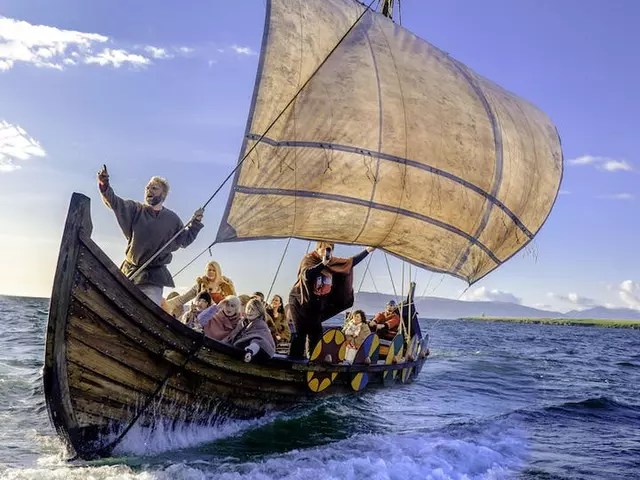Introduction: The Enigmatic Voyages of the Vikings
When you think of the Vikings, what comes to mind? Perhaps you visualize fierce warriors sailing the high seas, conquering lands and expanding their territories. It's an image that history books have painted for us over the centuries. But is there more to these seafaring Norsemen than meets the eye? Did they, in fact, sail northeast along the Arctic Sea? Let's dive into this intriguing topic and explore the possibility of this overlooked aspect of Viking exploration.
Understanding Viking Navigation Techniques
Before we delve into their possible Arctic voyages, it is crucial to comprehend how the Vikings navigated the vast and unpredictable seas. They were master seafarers, relying on a combination of celestial navigation, landmarks, and wildlife behavior. Their ability to read the stars, interpret the flight patterns of birds and analyze the currents were instrumental in their successful voyages. The question then isn't whether they could have sailed the Arctic Sea, but rather, did they?
The Viking Expansion: Beyond the Known Horizons
It is well-documented that the Vikings had a voracious appetite for exploration. They sailed west to Greenland and even reached the shores of North America, long before Christopher Columbus. However, the northeast route along the Arctic Sea is less explored in historical texts. The harsh conditions of the Arctic region may have deterred many, but the Vikings were known for their resilience and adaptability. Could they have braved these icy waters in their quest for new lands?
The Viking Ships: Built for the Arctic?
The Viking ships were marvels of naval architecture for their time. They were designed to withstand rough seas, and their shallow draft allowed them to navigate both deep and shallow waters. But were these ships capable of withstanding the harsh conditions of the Arctic Sea? The answer seems to lean towards a yes. The sturdy construction of the Viking longships, coupled with their ability to beach on any shoreline, would have made them apt for Arctic exploration.
Evidence of Viking Presence in the Arctic
Archaeological findings provide compelling evidence of Viking presence in the Arctic region. Ruins of Viking settlements have been discovered in the far north of present-day Russia, along the coasts of the Arctic Sea. These settlements indicate a level of comfort and adaptation to the harsh Arctic conditions, suggesting that the Vikings not only sailed these waters but lived there too.
Historical Records and Sagas
Historical records and sagas also lend credence to the theory of Viking navigation along the Arctic Sea. The Norse sagas, epic tales passed down through generations, often speak of voyages to the 'far north', a term believed to refer to the Arctic region. Though these sagas are often shrouded in mythology and folklore, they provide valuable clues about the Viking's Arctic adventures.
The Trade Routes: A Driving Force
Trade was a significant driving force behind the Viking’s extensive exploration. The Arctic Sea would have provided a direct route to the rich markets of the east, leading them through present-day Russia and towards the Middle East. It is plausible that the lure of exotic goods and the promise of wealth would have enticed the Vikings to brave the Arctic seas.
The Challenges of Arctic Exploration
While there is evidence suggesting the Vikings sailed the Arctic Sea, it is essential to acknowledge the challenges they would have faced. The freezing temperatures, treacherous ice floes, and unpredictable weather conditions would have tested even the toughest Viking explorers. Their success in these adversities speaks volumes about their seafaring skills and indomitable spirit.
Conclusion: The Vikings' Arctic Legacy
In conclusion, while there is no definitive proof, a combination of archaeological evidence, historical records, and the Vikings' renowned seafaring abilities indicate that they may well have sailed northeast along the Arctic Sea. This overlooked aspect of Viking exploration paints a picture of a people who were not only fierce warriors but also resilient explorers, pushing the boundaries of the known world. It is a testament to their daring spirit and an integral part of their rich and fascinating legacy.




